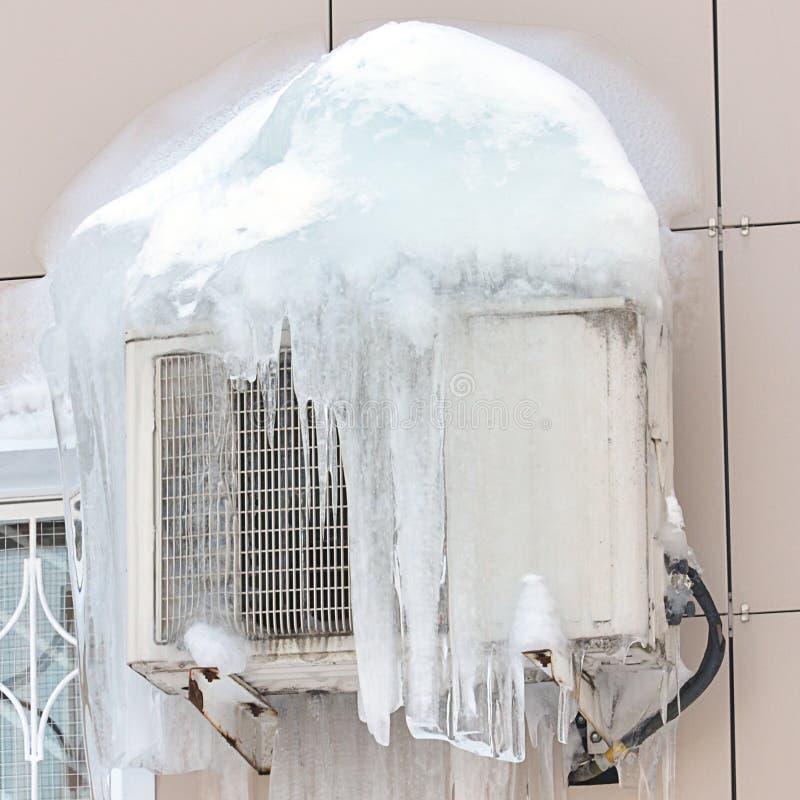Frozen AC Pipe - Recognizing and Fixing the Issue Promptly
Frozen AC Pipe - Recognizing and Fixing the Issue Promptly
Blog Article
We have noticed the article pertaining to How can I fix an air conditioner’s frozen pipe? listed below on the web and concluded it made good sense to write about it with you over here.

Introduction
Discovering that your air conditioner pipe is frozen can be concerning, particularly during warm summertime when you depend on your a/c unit the most. Recognizing what to do in such a circumstance is critical to prevent further damage to your air conditioning system and ensure your comfort inside.
Understanding the Causes
Numerous aspects can contribute to the freezing of an AC pipe. Recognizing these causes can assist you address the problem successfully.
Lack of Airflow
One common cause of an icy air conditioning pipeline is inadequate airflow. When the air movement over the evaporator coil is limited, it can trigger the coil to go down below freezing temperature level, resulting in ice formation on the pipeline.
Reduced Refrigerant Levels
Not enough refrigerant degrees in your AC system can likewise lead to an icy pipe. Low cooling agent levels can cause the pressure in the system to go down, leading to the cold of moisture on the evaporator coil.
Winter Conditions
In colder climates, freezing temperatures outside can contribute to the freezing of a/c pipelines. If your air conditioner device is not effectively shielded or if there are leakages in the ductwork, cool air can penetrate the system, triggering the pipe to freeze.
Dirty Air Filters
Dirty or clogged up air filters can limit air flow in your air conditioning system, resulting in various concerns, including a frozen pipeline. It's vital to change or clean your air filterings system on a regular basis to guarantee proper air flow and prevent ice build-up.
Indications of a Frozen Air Conditioner Pipe
Acknowledging the indicators of a frozen a/c pipeline is essential for timely activity.
Reduced Airflow
If you see a substantial decline in airflow from your vents, it could indicate an icy pipe.
Ice Buildup on the Pipe
Visible ice build-up on the cooling agent line or the evaporator coil is a clear sign of an icy AC pipeline.
Unusual Sounds from the Unit
Unusual sounds, such as hissing or gurgling, originating from your air conditioning system can indicate that there's ice present on the pipe.
Immediate Actions to Take
When confronted with a frozen air conditioner pipeline, it's vital to act quickly to avoid more damage to your cooling system.
Shutting off the a/c
The initial step is to shut off your ac system to avoid the system from running and worsening the concern.
Looking for Blockages
Inspect the area around the indoor device for any kind of blockages that might be blocking air flow, such as furniture or drapes.
Defrosting the Pipe
You can utilize mild approaches like putting towels soaked in cozy water around the frozen pipe to aid thaw it slowly.
Preventive Measures
Taking safety nets can assist avoid future incidents of a frozen air conditioner pipe.
Normal Maintenance Checks
Arrange routine upkeep consult a professional HVAC technician to ensure that your a/c system is running effectively.
Transforming Air Filters
Regularly change or clean your air filters to stop air movement limitations and keep optimal efficiency.
Protecting Exposed Pipes
If your air conditioning pipelines are exposed to cool temperature levels, consider shielding them to prevent cold throughout winter season.
Seeking Professional Help
If DIY techniques fall short to deal with the issue or if you're unclear regarding exactly how to proceed, it's best to look for help from a qualified HVAC technician.
When DIY Methods Fail
If your efforts to thaw the pipe or address other concerns are unsuccessful, it's time to hire a professional.
Value of Hiring a Professional HVAC Technician
A licensed HVAC technician has the expertise and devices needed to detect and repair problems with your AC system safely and properly.
Conclusion
Taking care of a frozen a/c pipeline can be a frustrating experience, yet recognizing just how to react can assist decrease damage and recover convenience to your home. By recognizing the reasons, recognizing the indicators, and taking punctual activity, you can properly resolve the issue and prevent future occurrences.
What to Do If Your AC Line Is Frozen
Make Sure All Supply and Return Air Vents Are Open
If you notice problems with airflow, the first thing you should do is check your supply and return vents. Supply vents distribute clean, conditioned air throughout your home. As this air becomes stale, it’s pulled into the return vent, where it’s reconditioned before being sent back out through the supply vent.
When these vents are closed, air won’t flow in the home. Before examining your AC, check the vents in every room and ensure they’re all open.
Check for a Dirty Air Filter
Another possible cause of limited airflow is a dirty air filter. Your air conditioner’s filters catch elements you don’t want to breathe in, such as dirt and dust. Over time, filters can become clogged, ultimately blocking air from flowing in and out. The lack of airflow can then cause the entire coil to freeze and will completely restrict any air from moving through it. The AC may need to be powered off for one to two days to allow the coil to thaw after replacing the filter to allow proper functioning of the unit. This debris can also accumulate on your AC’s evaporator coil, requiring a more serious repair. In general, air filters should be cleaned regularly (about every two weeks).
Assess Your Outdoor Unit
In addition to checking your AC, assessing the outdoor unit is a good idea. Also known as the condensing unit, it works with your interior unit to release heat outside. An issue with the outdoor unit can result in rising internal temperatures.
Overgrown Shrubs or Clogged Leaves
From leaves and twigs to shrubs and debris, there’s no shortage of outdoor elements that can accumulate around your condensing unit. When these elements get lodged inside the unit, they can block airflow. Fortunately, removing the blockage can solve the problem.
Sounds of a Broken Fan
Shrubs and leaves aren’t the only things that can impede your outdoor unit’s airflow. If the fan is broken, the unit won’t be able to properly get rid of heat — which means the internal temperature won’t go down. First, make sure the fan is spinning. If it is, check for the following sounds of a broken fan:
Buzzing Rattling Screeching Hissing Clicking Preventative Measures
Nobody wants to deal with a frozen AC line. In addition to causing problems with your air conditioner, they require professional repairs. On the bright side, there are preventative measures you can take to help ensure this issue doesn’t arise in the first place.
https://www.coopergreenteam.com/blog/what-to-do-if-ac-line-frozen

I stumbled upon that article about Why Is Ice On My Outside Air Conditione while doing a lookup on the web. Sharing is nice. Helping people is fun. Thank-you for your time invested reading it.
Explore Report this page